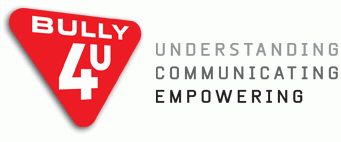BullyingUK saw calls relating to cyberbullying increase by 77% over a 12 month period. Cyberbullying can and does have a seismic effect on the families concerned. In an online survey, BullyingUK also found that 43.5% of respondents aged between 11 and 16 had been bullied via social networks. 51% felt that blocking the bully from further contact or communication was a vital tool.
How big a problem is online bullying?
We believe that some children are being relentlessly bullied with no respite as online social media channels permeate the home and the school environment. But the act of bullying itself is the problem. Whilst recent efforts have focused on the pernicious effects of open and anonymous ‘cyberbullying’; confrontational and physical bullying remains an issue. A national BullyingUK survey (1761 respondents) found:
· 93% of pupils reported that bullying occurred at school primarily during break, in classrooms and the playground
· 81.4% of young people were bullied by more than one person. 62% of the children confided in their parents
· 95% of parent respondents told BullyingUK that bullying took place in school, with 83.2% identified as name calling, 66% as physical bullying and 68.1% social bullying
Has the law changed to deal with the issue?
There is no legal definition of cyberbullying within UK law. However there are a number of existing laws that can be applied to cases of cyberbullying and online harassment, namely the Protection from Harassment Act 1997, Criminal Justice and Public Order Act 1994, Malicious Communications Act 1988, Communications Act 2003, Breach of the Peace (Scotland), Defamation Act 2013. Guidelines issued by the Crown Prosecution Service in Dec 2012 explain how cases of cyberbullying will be assessed under the current legislation. Download the ‘CPS Guidelines’ here.The Defamation Act 2013 came into force on 1st January 2014. To read the act and for more information click here.
Should anonymous sites where young people can comment on each other be banned?
For every site that is banned another one will pop up a few days later. Therefore parents, professionals and children need to equip themselves with the resilience to recognize the signs of cyberbullying.
Since early 2013, BullyingUK has been contacted by people express their concern about sites such as Ask.fm which allegedly let any viewer see the names, photographs and details of children as young as 13, then post comments or questions on their profile pages – this has reportedly ranged from insults to perverted sexual advances and threats of violence. This week Ask.fm announced its first safety advisory board to make the site a “safer and more positive place” for users.
That any website enables young and impressionable children and adults to anonymously post damaging and derogatory comments towards young children and adults and needs to be addressed.
What would you advise parents to do?
Technology has become part of the tapestry of family life and plays an increasingly prevalent role in day to day, family activity. However, it is not something that parents – or their children – are at the mercy of – all too often we forget that the online world is a controllable experience.
The same common sense needs to be applied to internet usage as to any other area of parenting. It’s about critical thinking and making smart choices for a healthy balance between digital life and real life. An obvious, but very common, scenario is “my child is glued to their mobile phone from the moment they come home from school to the moment they fall asleep that night”.
First things first: set boundaries early on, particularly around screen time, and instil from the start a rule that devices are left downstairs at bed time. The second thing is to lead by example: the same rules apply for the adults as for the kids. If a parent is continually engrossed on their iPad, or checks work emails during family time, then it makes that behaviour appropriate, and it’s hardly surprising children do the same.
The key is to not wait for conflict, but put boundaries in place to stand you in good stead to deal with issues as and when they arise. Parents have always worried about their children’s use of existing and emerging technologies. We encourage parents to have conversations with their children as the consequences of accessing inappropriate and violent sites can be extremely damaging and can distort perceptions about real life and relationships.
Should children be allowed their own laptap?
We advise keeping PCs, laptops and tablets in a room used by all the family. Parents must monitor how much time their child/ren spend online and encourage them to openly talk about what they’re looking at. Young people are more likely to seek help and advice from parents who listen and are supportive, rather than those who lecture or fly off the handle.
Parents should be talking to their children at a young age and stressing the importance of a password, and how they should NEVER share their passwords out with friends or strangers. Parents should create their children’s online accounts themselves and not let the child do it. That way they will also have access to passwords. Of course parents can’t monitor other occasions where their child may set up an account hence why the importance of not sharing passwords must be re-iterated.
If you have purchased your child a laptop make sure you set the laptop up with you as the ‘Administrator’ and create your child’s account without these rights. This is a safety precaution as it also prevents your child from installing in malware or by mistake clicking on something they should not have which could then install malicious software onto their laptop. It is through software like this that criminals are able to take control of web cams on machines.
Microsoft also has very easy to use ‘Parental Controls. Windows 8 for example lets you create an account as a ‘child’s account’ and then the wizard walks you through step by step the various parental control options. When your child begins to use their laptop logged in with their ‘child’ account they get a little pop saying their account is being monitored via parental controls. You as the parent will receive a weekly report emailed to you on what your child has been doing. Some of the report covers items such as the number of hours they have used certain applications, the most used ‘search terms’ typed in and any potentially unsafe sites visited.
What about their phone?
Mobile phones and tablets come with very useful ‘Restrictions’ area on their operating system. You as the parent can enable this via a 4 digit pin. Your child then cannot access this section without your pin. You can access this area in setting/restrictions and manage your child’s access to the internet browser and the app store. You can switch off ‘in app purchases’ and even select the age level of apps and movies and music they can access. You can also prevent face-time from being used. This is a very useful area to set up and only takes minutes.
What should schools do?
Whilst not being limitless in their capacity of course, schools need to be alive to the reality that bullying today goes well beyond the boundaries of the playground. Just as with any form of bullying schools should be alert to the signs and work to foster collaboration between teachers, parents and pupils in tackling the issue. For more information visit here.
What advice would you give to young people about their online identity?
Just as we teach children how to cross the road and how to swim, online activity and social media interaction should be initially supervised. Adults may feel they are behind the technological curve, but parents and other family members may wish to familiarise themselves with how the ever evolving computer and mobile technology works. For example, spending time with children looking at functions, exploring how to block unwanted emails and the GPS facility.
If a child seems distressed after a phone call or time spent on the internet, try and find out the reasons for this. Vulnerable children can become so consumed by negative online comments towards them, it is crucial that a sense of perspective and proportion is injected by a role model to avoid issues spiralling out of control.
Anastasia de Waal is Chair of BullyingUK





 Teachers will today call for an investigation into rising levels of poor behaviour among girls in the classroom.
Teachers will today call for an investigation into rising levels of poor behaviour among girls in the classroom. The boy was convicted of distribution of child pornography and will remain on the sex offender registry until he’s 43 years old.
The boy was convicted of distribution of child pornography and will remain on the sex offender registry until he’s 43 years old.